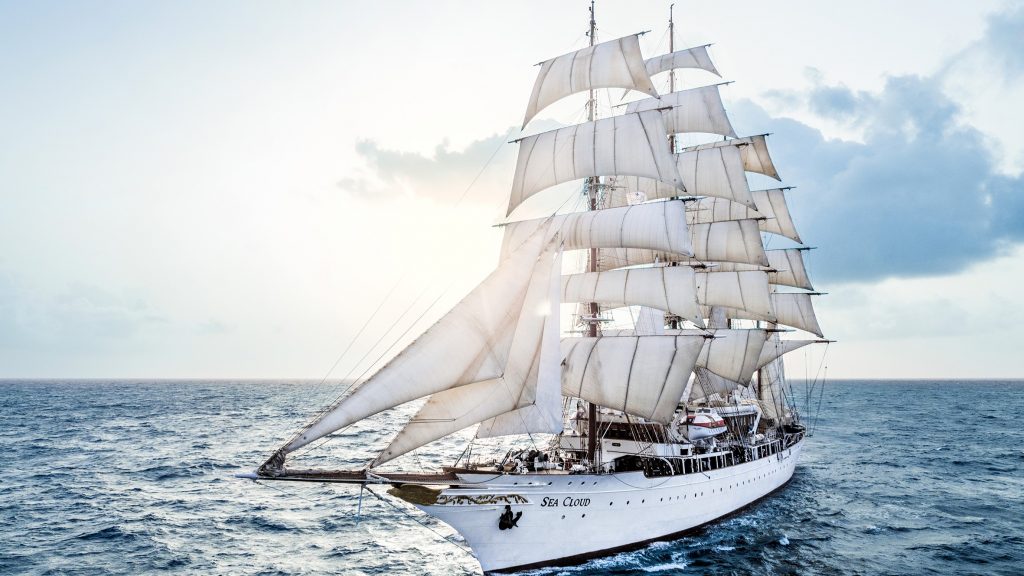
Sea Cloud, an epitome of maritime elegance, is a legendary windjammer that encapsulates the golden age of sailing. Built over 90 years ago, this luxurious four-masted barque is renowned not just for its grandeur but also for its rich history and exceptional craftsmanship.
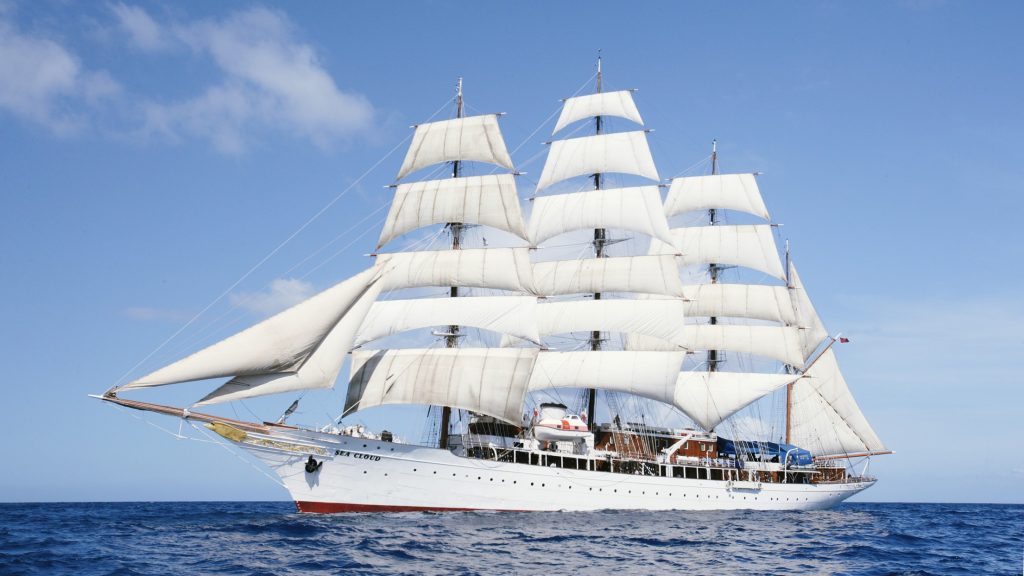
Spanning over 360 feet, Sea Cloud boasts 30 sails that create a breathtaking spectacle when fully unfurled. Its masts soar high above the deck, supporting an intricate web of rigging and canvas that harkens back to an era of majestic seafaring vessels. The ship’s design reflects a blend of opulence and functionality, featuring lavish staterooms adorned with fine woodwork, antique furnishings, and elegant decor, reminiscent of a bygone era of luxury.
A symbol of love
Throughout its storied past, Sea Cloud has served various roles. Money was not an issue when Wall Street broker Edward Francis (E.F.) Hutton commissioned the Hussar in 1931. Concerning the interior of what at the time was the largest private sailing yacht in the world, he gave free reign to his wife, the glamorous Marjorie Merriweather Post.
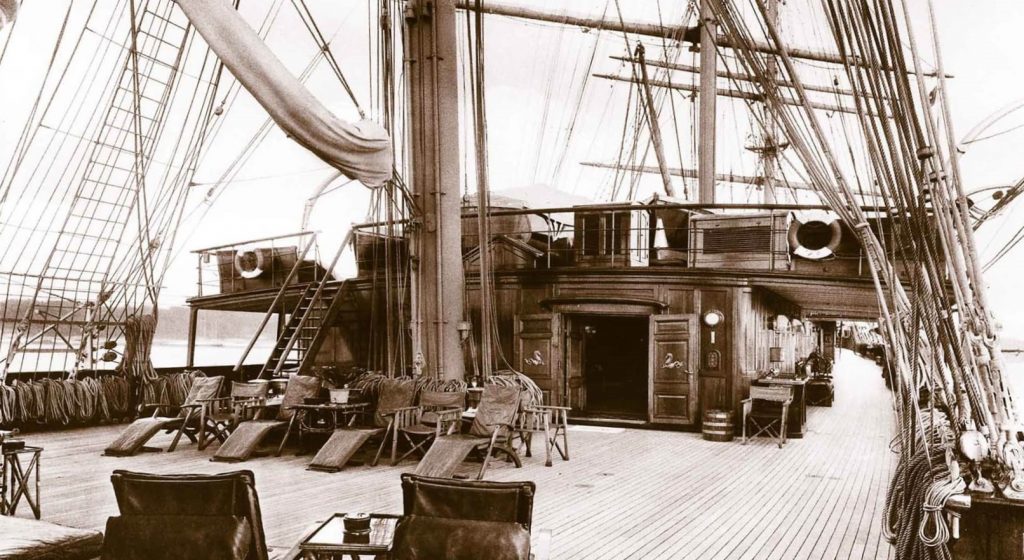
She furnished the four-mast ship with a sure sense of style and carefully chosen antiques, which provided its distinctive character. At least nine months of the year, the Huttons spent at sea heading for the most exotic destinations.
A new life under a new name
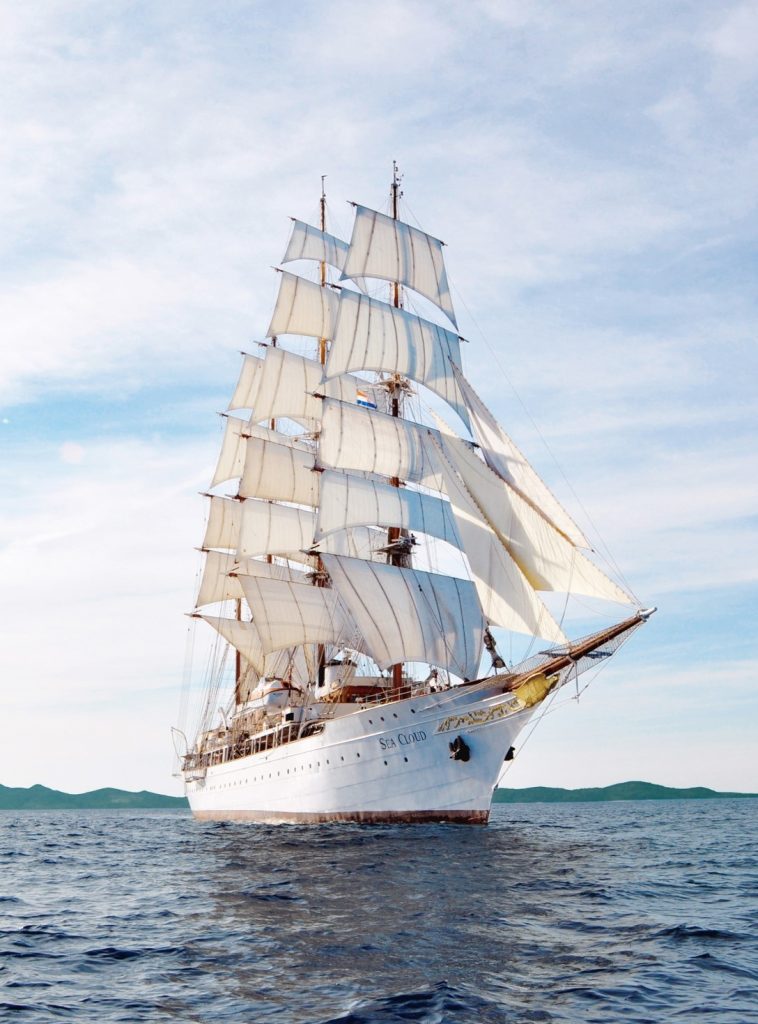
But their life in the lap of luxury soon became clouded: In 1935, the affluent couple got divorced, and Ed Hutton signed the Hussar over to his ex-wife. She had the previously black hull painted white and gave her yacht a new name: The Hussar became the Sea Cloud. And before the end of that year, Marjorie got married to her old friend Joseph E. Davies. The attractive socialite moved not only in the circles of economic magnates but also became familiar with the world of politics and diplomacy.
When Davies took on the position of US ambassador in Moscow in 1937, the Sea Cloud was ordered to Leningrad as a floating (and bugproof) diplomatic palace. Marjorie excelled at socializing within the diplomatic scene. Besides the Soviet notables, several crowned heads, among others from the Swedish and Belgian royal dynasties, happily accepted her invitations on board. But when Davies was appointed US ambassador in Belgium in June 1938, the Sea Cloud had to bid the USSR farewell.
A yacht’s war service
Few guests are aware of the significance of the small plaque that is affixed to the face side of the wheelhouse: Each of the five brass angles indicates six months of active war service for the USA. After the US entered the war in 1941, the Navy began to acquire private yachts to reinforce the fleet; and Marjorie and Joe Davies committed the Sea Cloud to the Coast Guard for the symbolic charter of one dollar – opinions differ whether this was from a patriotic sense of duty or due to economic necessity. With demounted masts and a grey coat of paint, the proud luxury yacht cruised between the Azores and Greenland as a floating weather station.
Back to new splendor
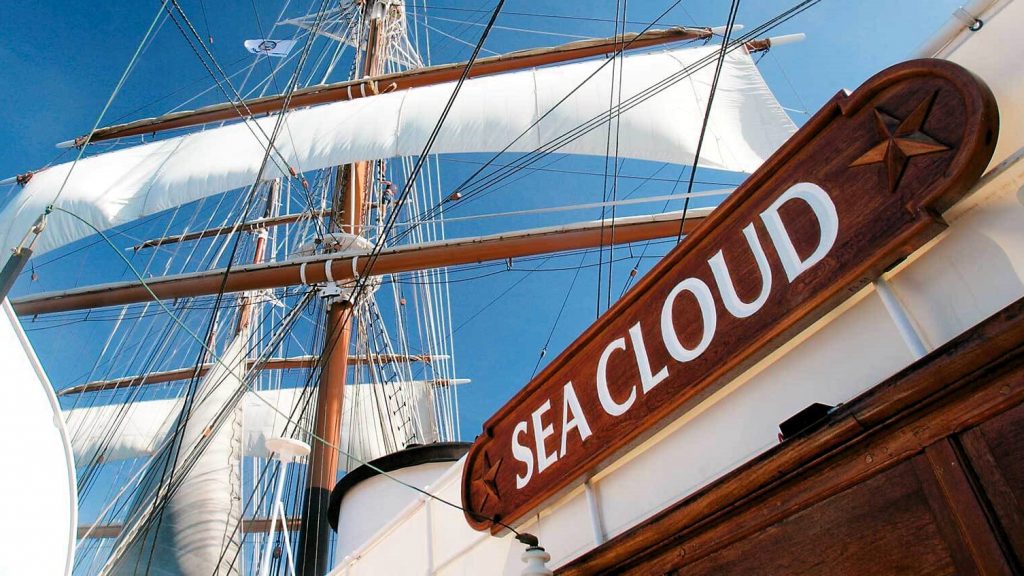
After the end of the war, the refurbishment of the Sea Cloud was to take almost four years: Only in 1949, the windjammer, freshly painted white again, received an entire set of new sails. When she first appeared on the horizon under full sail, Joe said to Marjorie: “Well, dear, there goes your baby.” But meanwhile, someone else also coveted Marjorie’s baby: Rafael Leónidas Trujillo Molina, dictator of the Dominican Republic.
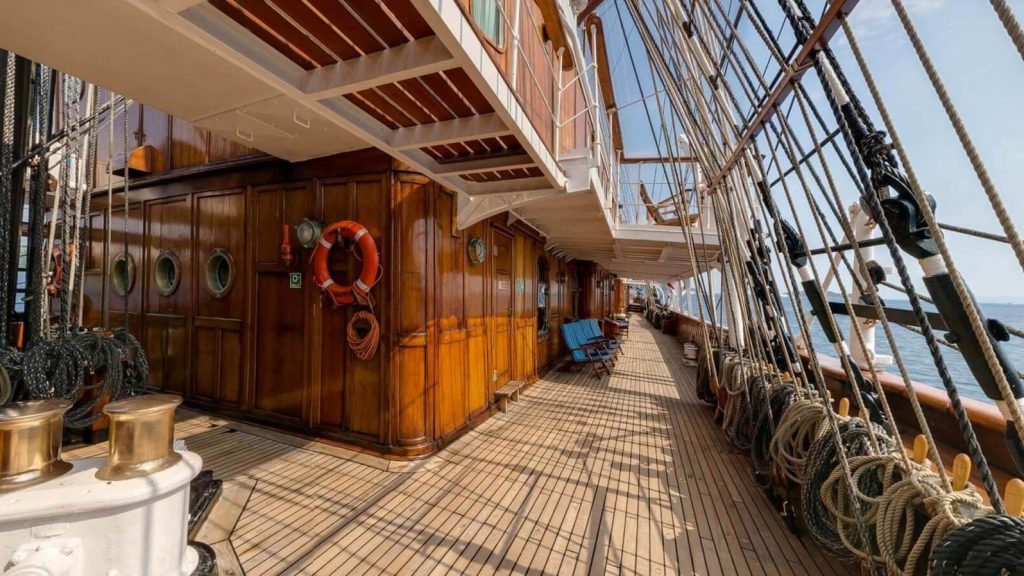
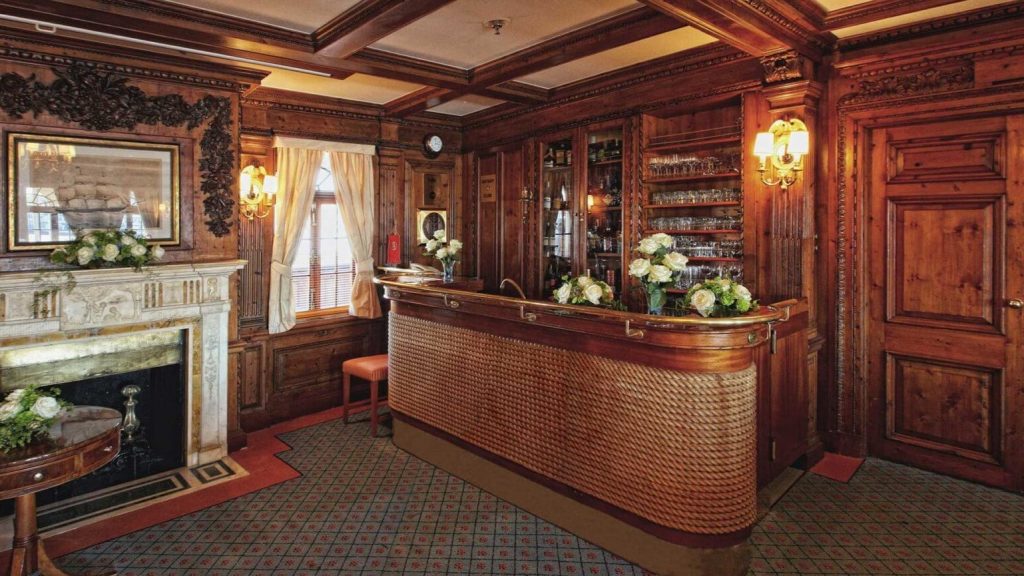
Retirement for a “Queen of the Seas”
In 1955, Trujillo bought the ship and renamed it Angelita. Mostly, his son Ramfis used the presidential yacht – for parties with Hollywood stars like Zsa Zsa Gabor and Joan Collins. When Trujillo was shot dead in 1961, a revolution unsettled his country. Carrying the dead body, part of the Trujillo clan and enormous amounts of cash, the Angelita set sail for Cannes. But the new-fangled government forced the crew to turn around: The expensive heirloom was renamed Patria and put up for sale again.
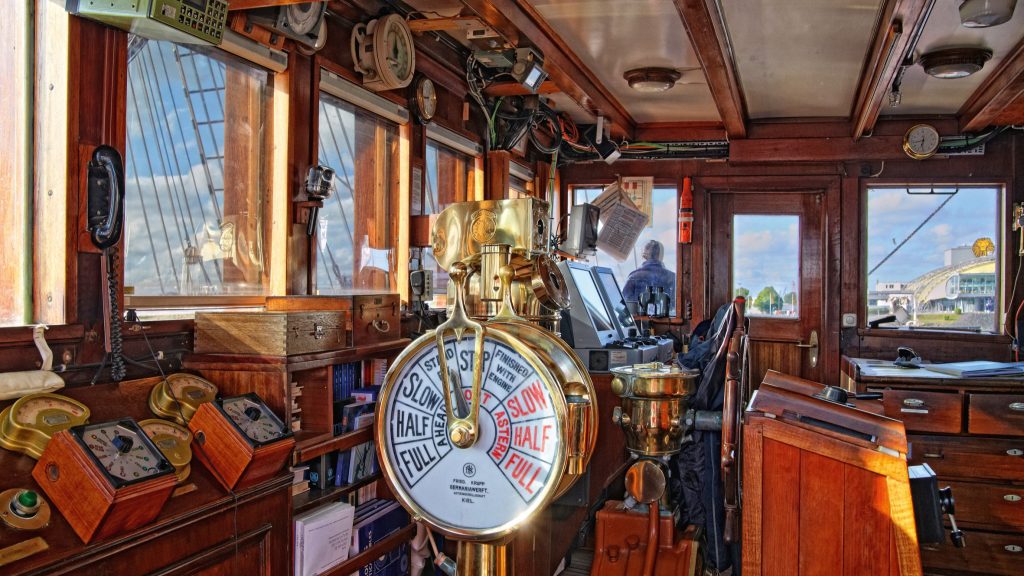
Five years later, the Operation Sea Cruises Inc. under John Blue bought the ship. However, when the Antarna – that was the yacht’s new name – entered the U.S. on the return journey from Naples, there was trouble with the authorities, and the Antarna was impounded. This was when Stephanie Gallagher appeared on the scene: At just 26 years of age, she was obsessed with the idea of an “Oceanic School” and academic learning at sea. Although “Oceanics” settled all unpaid invoices, John Blue retained the ship’s papers. Stephanie Gallagher set sail nevertheless – and was now chased as a “pirate”. In Panama, Blue finally came on board accompanied by attorneys and the police. Stephanie Gallagher had no choice but to give up.
Renaissance of a dream yacht
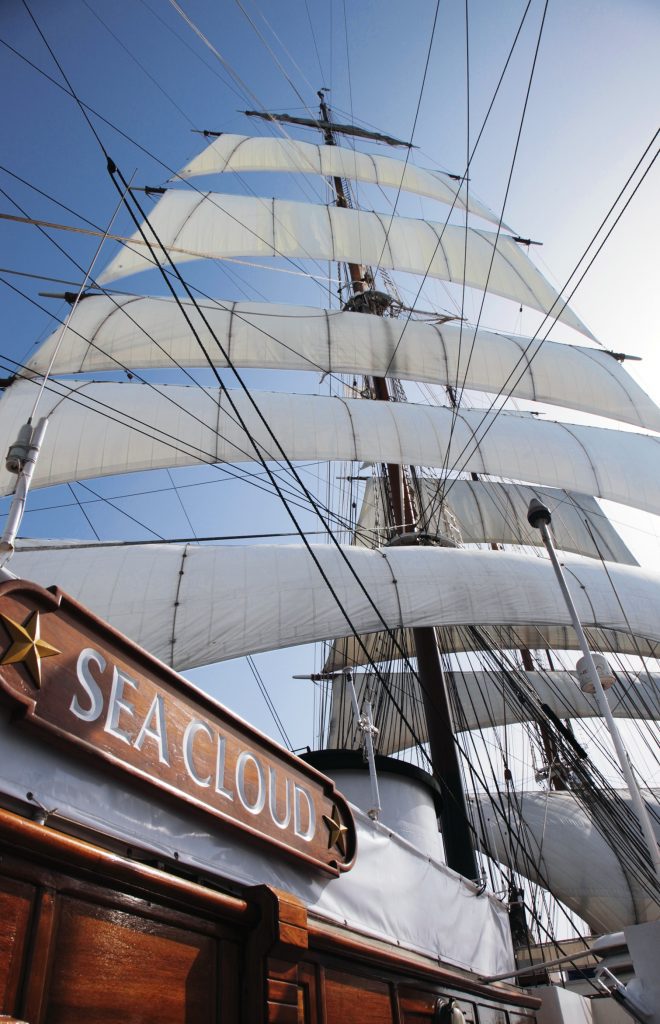
For eight years, the Antarna was berthed unprotected in the port of Colón and exposed to the damp climate. But she was not forgotten by the enthusiasts for proud sailing ships. One such aficionado was the German Hartmut Paschburg, sea captain and economist. Together with a group of merchants from Hamburg, he purchased the luxury yacht – and gave her back her old name, Sea Cloud. But the hardest piece of work was yet to come Captain Paschburg had to bring the yacht home across the Atlantic.
In 1978, he gathered 40 men and women and together, they made the dilapidated yacht seaworthy again, then sailed her back to Hamburg. The shipyard Howaldtswerke Deutsche Werft AG in Kiel carried out the extensive overhauling and alteration work; and eight months later in 1979, the Sea Cloud, now reflagged, went on her first cruise.
Since her extensive refurbishment in 2011, the windjammer not only conforms to the up-to-date SOLAS regulations (Safety Of Life At Sea) but shines in new splendor – as timelessly elegant as ever.
What began in 1931 with the dream of a millionaire couple and fascinated people then, still continues to create unforgettable memories to many travelers.
Pictures: Sea Cloud Cruises